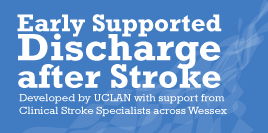 |
Anatomy and Physiology relating to stroke |
The cerebrum is the part of the brain that occupies the top and front portions of the skull and is the anterior part of the brain. It is divided into the right and left sides, or hemispheres. Depending on the area - and the side of the cerebrum affected by the stroke - any or all of the following body functions may be impaired:
|
|
The cerebellum is located beneath and behind the cerebrum towards the back of the skull. It receives sensory information from the body via the spinal cord and helps to coordinate muscle action and control, fine movement, co-ordination and balance. The common effects of stroke in the cerebellum include:
- Inability to walk and problems with coordination and balance (ataxia)
- Dizziness
- Headache
- Nausea
- Vomiting
 |
 |
 |